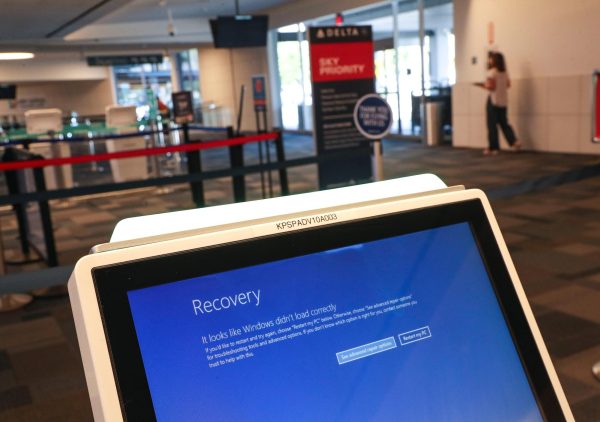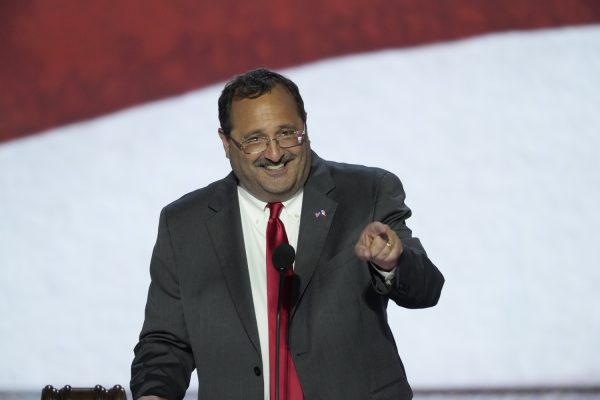The numbers behind this year’s closest Congressional race
Undervotes, rejected mail in ballots, and mixed party tickets all contributed to a competitive election in a race without an incumbent for Iowa’s 2nd Congressional District House Representative.
November 30, 2020
The race in Iowa’s 2nd Congressional District was the closest congressional race the state had seen in over a century. Iowa Secretary of State Paul Pate finalized the results on Monday, certifying Mariannette Miller-Meeks as the winner, with a six-vote margin of victory.
In a race where 394,441 votes were counted, there is a lesson to take away from Iowa’s 2nd District — every vote counts, even the votes of 703 people who opted to write in a congressional candidate.
The Associated Press will not call the race for Miller-Meeks until legal challenges have been settled. The Hart campaign has not officially announced any potential legal battles.
In order to understand how close this margin is, The Daily Iowan broke down the numbers that led to Miller-Meeks’ six-vote victory.
Undervotes
According to the Iowa Secretary of State’s website, there are 566,600 registered voters in Iowa’s 2nd District. Of those voters, 394,441, or 69.61 percent voted in the congressional race. That is 17,275 fewer votes cast than in the presidential race — 411,705.
John Deeth, an election staffer in Johnson County, told The DI in an email that the over and undervotes in this election were similar to other presidential year congressional races.
“In general, the farther down the ballot you go, the higher the under vote. For example, 36.3 percent of voters skipped the last judge.” Deeth said of results in Johnson.
Eliza Willis, a political science professor at Grinnell College, suggested it’s possible that because President Trump was able to mobilize new voters, maybe those Republicans who were motivated to vote for the presidential race didn’t attribute as much importance to the other races.
“The Republicans kept pace with the Democrats, but I would say probably there were some new voters in there and those new voters cared, mainly about voting for President Trump and didn’t really care about the other races as much,” she said.
Comparing the presidential votes to congressional votes
In the district, 209,858 people voted for Trump, and 193,437 people voted for now president-elect Joe Biden. Trump won by 16,403 votes, but Republican Miller-Meeks only won by six votes. In the congressional race, 196,964 voted for Miller-Meeks and 196,958 voted for Hart.
In Johnson County — Iowa’s bluest county — Biden received 59,177 votes and Trump received 22,925. Hart received 56,129 votes and Miller-Meeks received 24,101. Despite being lower on the ballot, Miller-Meeks received more votes in Johnson County than Trump did.
“I think that it could reflect the fact that there was some dissatisfaction—and I think we saw this in a lot of the elections across the country—with Donald Trump, but not with the Republican Party. And [Miller-Meeks] did extremely well in this district Compared to her past runs against [Dave] Loebsack,” Willis said.
Willis said not having an incumbent in this race lended to it being a close election.
Mail-in ballots
The DI reached out to the auditors of the district’s 24 counties. Of those who responded, Johnson County had the highest number of rejected ballots. According to Deeth, the county’s absentee board rejected 63 ballots.
Johnson County has the second highest population of registered voters, behind Scott County, which did not respond. Other populous counties that reported a significant amount of rejected ballots were Lee county, with 30 rejected ballots, Wapello, with 37 rejected ballots, and Muscatine, with 40 rejected ballots.
Of the 12 counties that shared the number of rejected mail-in ballots, 232 total mail-in ballots were rejected. Auditors cited unsigned ballots, voters changing addresses, and early votes being deceased by Election Day as reasons for rejecting ballots.
The recount
Hart requested a district-wide recount on Nov. 12, when she was trailing by 47 votes. All 24 counties in the district had to assemble a Recount Board, which determined whether the recount would be done by hand or machine. Most of the counties that responded to the DI said they were conducting a machine recount.

Willis said machines overall are more accurate, but in some specific instances, hand counts can catch ballots that machines may not read correctly.
“My view would be that there’s a bit of a trade off between sort of accuracy of counting ballots that have been filled out correctly, but then ones that might have slight errors—you have to fill in those ovals completely for example—and sometimes the machine can’t read that,” Willis said.
The deadline for counties to complete the recount was Nov. 28, and when the counties were finished, Hart was behind by six votes. Pate certified the tabulation determined by the recount on Monday.
Hart requested a recount after errors were found in the tabulation processes in Jasper and Lucas Counties, making Miller-Meeks the frontrunner.
The Hart campaign released a statement after the results were certified, saying “the Miller-Meeks campaign has sought to keep legitimate votes from being counted — pushing to disqualify and limit the number of Iowans whose votes are counted.”
Write in
There were 703 write-in votes for the 2nd Congressional race.
Other congressional races
In Iowa’s other three congressional district races, there was a clear winner on election night.
In Iowa’s 1st District, registered voters in the district turned out 75.38 percent in the race between Republican Ashley Hinson and Democrat Abby Finkenaur. 43,331 more people voted in the presidential race on their 2020 ballot than they did for the congressional race. Hinson won by 10,741 votes, with 51.25 percent of the vote.
Hinson beat incumbent Finkenaur, flipping the district from blue to red. Republicans also won the presidential vote in the district, with 213,601 votes for Trump and 199,259 votes for Biden.
Registered voters turned out 75.61 percent in the race between Democrat Cindy Axne and Republican David Young in Iowa’s 3rd District. 10,549 more people voted in the presidential race on their 2020 ballot than they did for the congressional race. Axne won by 6,208 votes, with 48.94 percent of the vote.
In Iowa’s 4th District, registered voters in the district turned out 71.51 percent in the race between Republican Randy Feenstra and Democrat J.D. Scholten. 16,052 more people voted in the presidential race on their 2020 ballot than they did for the congressional race. Feenstra won by 92,608 votes, with 61.97 percent of the vote.
Compare these numbers to Iowa’s 2nd Congressional District, where turnout for the congressional race was 69.61 percent and 17,275 more people in the district voted in the presidential race than in the congressional race.
Takeaways
After weeks of uncertainty, counting and recounting, voters in the district now know Miller-Meeks is their state-certified elected official. However, the battle for the seat may not be over if the Hart campaign challenges the results in court.
“Under Iowa law, this recount process was designed to count ballots that had already been tallied, meaning that additional legal ballots may have yet to be counted. Over the next few days, we will outline our next steps in this process to ensure that all Iowans’ voices are heard,” Hart’s campaign manager Zach Meunier wrote in a press release on Nov. 30.
Willis shared lessons voters can take from the last weeks of following this race. Mail in voters need to make sure they fill out their ballot correctly, and that they send it in early so they have time to correct any mistakes.
“Every vote counts. It just sounds very trite and hackneyed to say that but it is true,” she said. “… It’s very hard for people to see that because of course when there are a lot of people voting, you think ‘Well if I stay home, it doesn’t matter because all these other people are going out voting.’ But our elections in this country have gotten closer and closer and closer in a lot of places, and so, it matters.”















